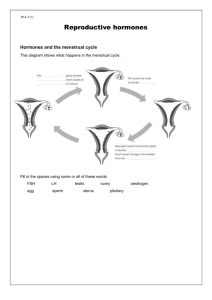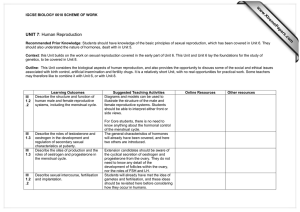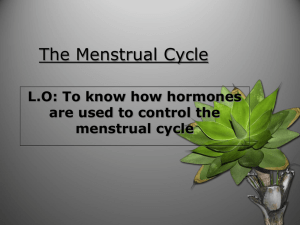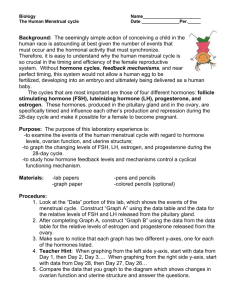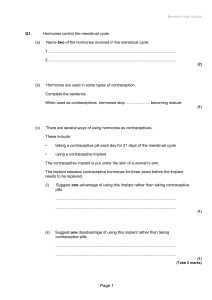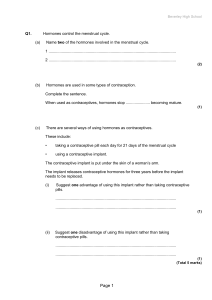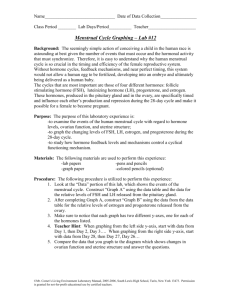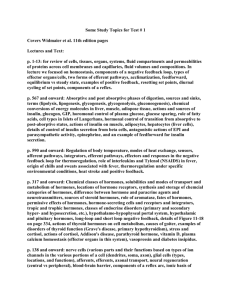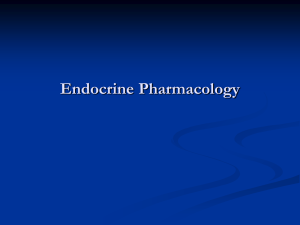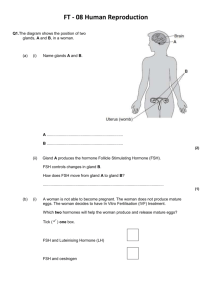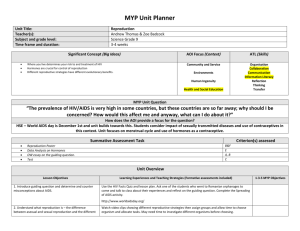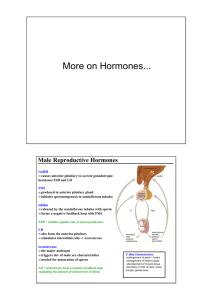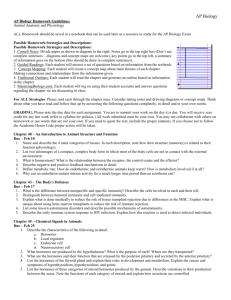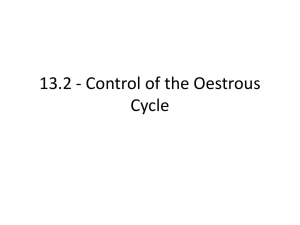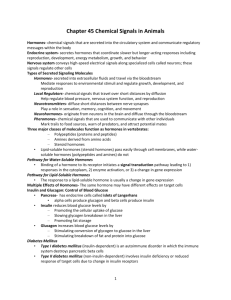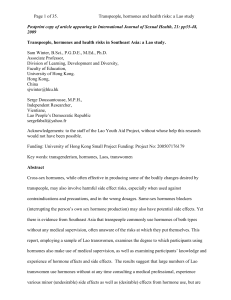Reproduction
advertisement
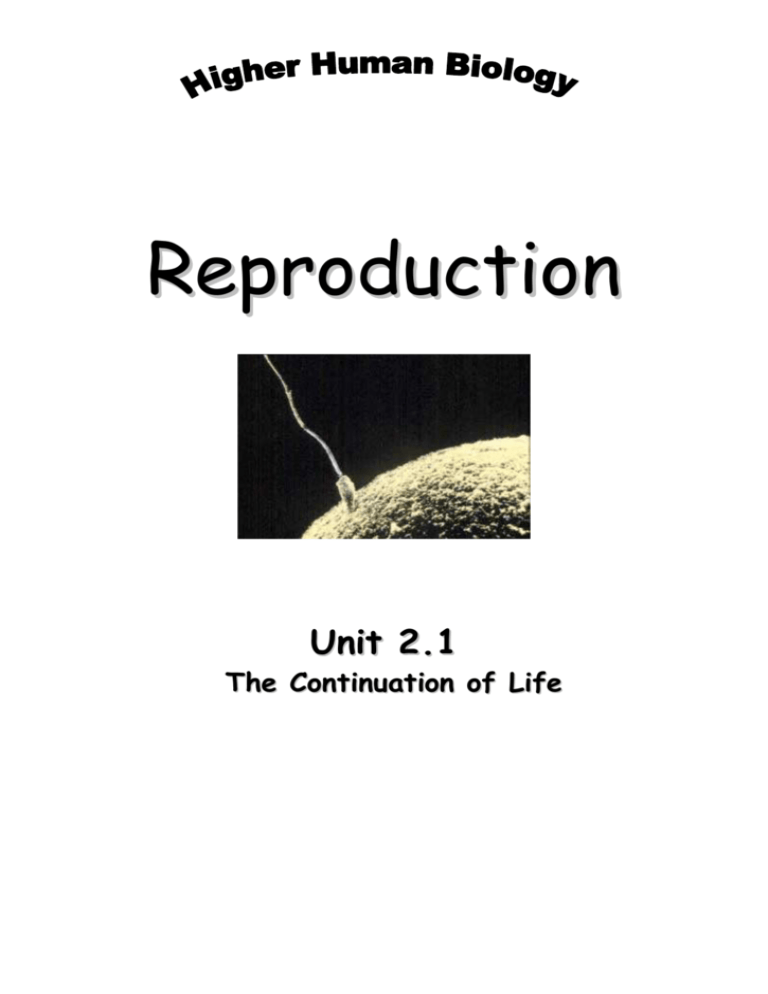
Reproduction Unit 2.1 The Continuation of Life Sex Organs and Hormonal Control 1. a) Label the main structures of the reproductive system of the human male on the diagram below. b)(i) The testes are the site of sperm production. in a testis are sperm produced? Where (ii) Name the hormone produced by interstitial cells and describe how it is transported (iii) Label some of these features on the diagram of a testis. c) (i) Name the accessory glands that secrete a liquid rich in fructose and prostaglandins. (ii) Describe the contribution to fertilisation made by prostaglandins. 2 (iii) What is the role of fructose? (iv) What is semen? 3 2a) Label the main structures of the reproductive system of the human female on the diagram below. b)(i) The ovaries are the site of production of eggs. Name the structure that surrounds an egg in an ovary. (ii) What does this structure develop into, following ovulation? (iii) Label the diagram below to illustrate some of these structures and their main functions or roles. 4 Hormones 3a) What are hormones? b) The pituitary gland produces many hormones including gondotrophic hormones. (i) Name the TWO gonadotrophic hormones and identify their main target organs. (ii) When do these hormones begin to get released? 4 a) Complete the table below which refers to three hormones in the male body. hormone site of production function of the hormone in males FSH stimulates interstitial cells to produce testosterone interstitial cells of testes b) Describe what self-regulation of testosterone is. 5 5 Complete the table below which refers to four hormones in the female body. hormone site of production function of the hormone in females stimulates development and maturation of each Graafian follicle and stimulates production of oestrogen triggers ovulation and brings about development of the corpus leteum stimulates secretion of LH by the pituitary gland and repair of the endometrium promotes thickening of the endometrium and inhibits FSH and LH from the pituitary. b) Identify which group of hormones oestrogen and progesterone are. The menstrual cycle The effects of the hormones on the female reproductive system bring about a regular pattern of events collectively known as the menstrual cycle. 1. a) Name the TWO phases of the menstrual cycle. b) On both diagrams below, label the 2 phases and describe the main events at each stage. 6 c) (i) What produces oestrogen during the follicular stage? (ii) Oestrogen brings about the repair of the endometrium. Note the other effect oestrogen has in the follicular stage and how this relates to ovulation. (iii) Explain why, during the luteal phrase, is it important that progesterone inhibits the production of any further FSH and LH. (iv) Note the other effect a lack of LH has, and describe the chain of effects this has that eventually results in menstruation. 7 d) Describe the effect fertilisation of an egg has on the menstrual cycle and explain why. 2. a)(i) Describe the effect high concentrations of oestrogen have on the viscosity of the mucus secreted by the cervix cells. (ii) Explain how this increases the chance of fertilisation. b) In what other way are sperm assisted in their passage through the female reproductive tract. c) Note the change in body temperature that occurs during the luteal phase of the menstrual cycle and how can this be used. 8 d) Explain the meaning of the terms ‘continuous fertility’ and ‘cyclical fertility’ in humans. 9 Intervention in fertility Intervention can be both unintentional in the form of infertility or intentional in the form of contraception. Infertility 1. a) List the FOUR common causes of infertility. b) Pick ONE problem for females and one for males. Briefly describe the underlying causes and the possible treatments for each. 2. Briefly describe what is meant by the terms in vitro fertilisation artifical insemination 10 Contraception 3 a)(i) On average, for how long does a woman’s period of fertility last during each menstrual cycle? (ii) Describe TWO signs that give an approximate indication of when this time occurs (iii) Explain the causes of both these signs. b) (i) How can these indicators be useful for: - planning a baby contraception (ii) Explain why using period of fertility indicators is an unreliable method of contraception. 11 (iii) Highlight on the graph below the period of fertility. c) (i) Explain the basic biological principal underlying the effectiveness of contraceptive pills, injections or implants. (ii) Explain why “dummy” pills or no pills are taken in the fourth week. 4. The diagram shows a simplified version of the male reproduction system following a vasectomy. a) Explain how this works as a method of contraception. 12 b) Suggest why vasectomy is more popular amongst middle-aged men than amongst men in their twenties. 13
